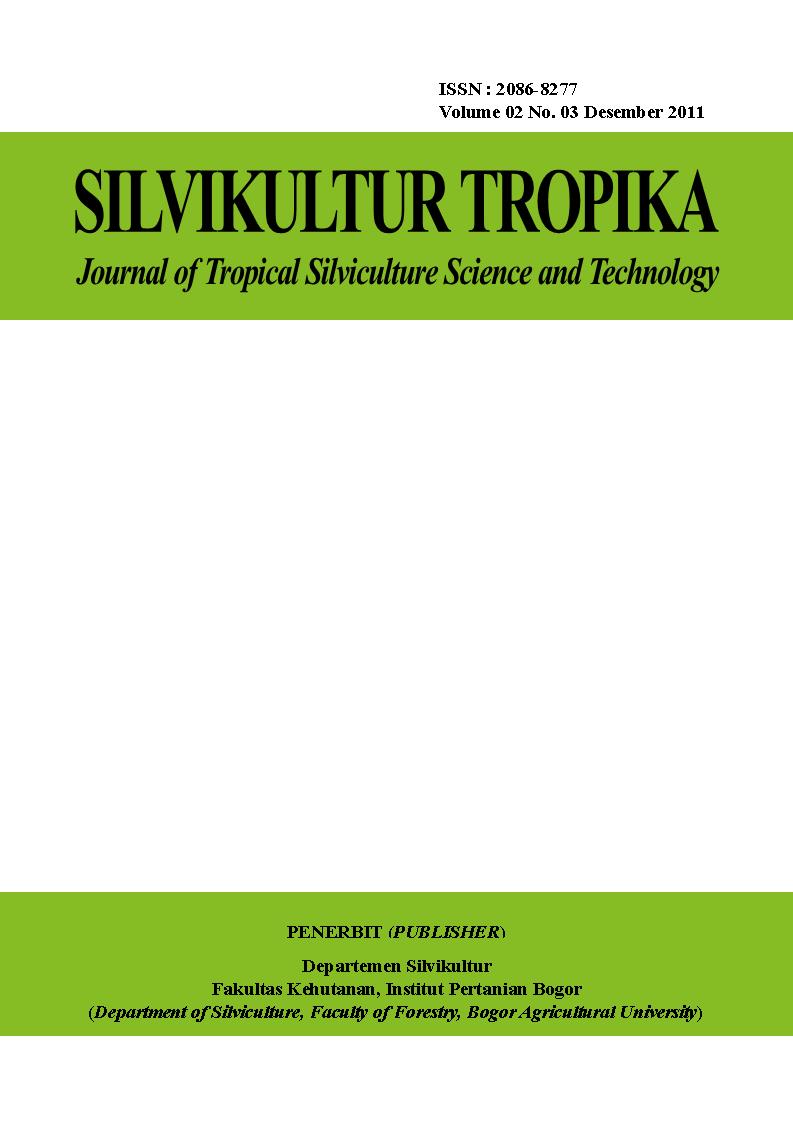Ketahanan Kayu Sengon terhadap Pycnophorus sanguineus dan Pleurotus djamor untuk Uji Standar Nasional Indonesia (SNI) 01-7207-2006
Abstract
The Resistance of Sengon against Pycnoporus sanguineus and Pleurotus djamor Using the SNI Methods (Standar Nasional Indonesia) 01-7207-2006
Fungi is a organism which does not have chlorophyll and receives the energy resources by absorption system to the organic matters. A wood contains cellulose, hemicelluloses, and lignin which in the wood decay fungi is very good needs. The kind of tree which the most acquainted with commercial trading till now is about 400 kinds of botanical (species). Around 80 – 85% of Indonesian woods had low class which it’s very easy attacked by wood decay fungi for instance Sengon. Kinds of it which potentially most decaying off the woods are Schizophyllum commune, Pycnoporus sanguineus, Dacryopinax spathularia, and Pleurotus djamor. This study was purposed to determine the potential of two kinds wood decay fungi to Sengon based on SNI Method (Standar Nasional Indonesia : SNI 01-7207-2006). Based on SNI 01-7207-2006 point out of wood weight loss percentage by the wood decay fungi knows that Sengon belong to IV - V resistance class (not resistant till very not resistant). The wood weight loss percentage was Sengon by P. sanguineus
breed (31,09%) belong to V resistance class (very not resistant) and the wood weight loss percentage by P. djamor (20,51 %) belong to IV (not resistant).










